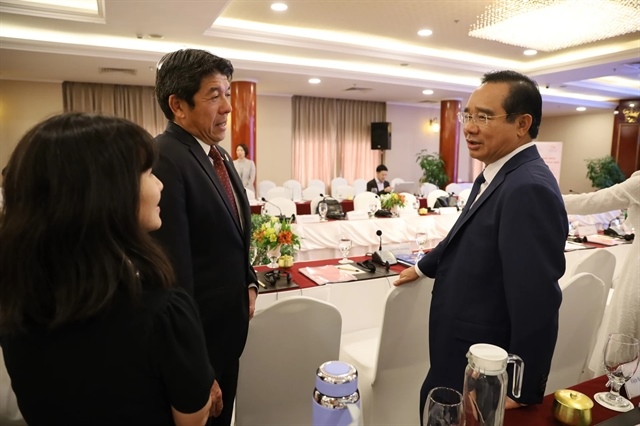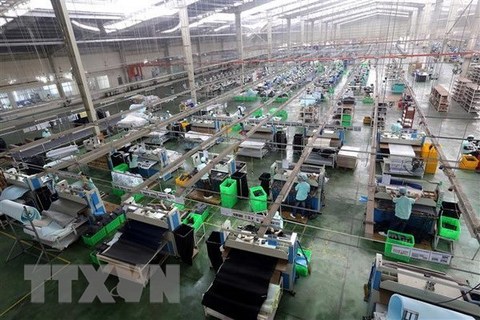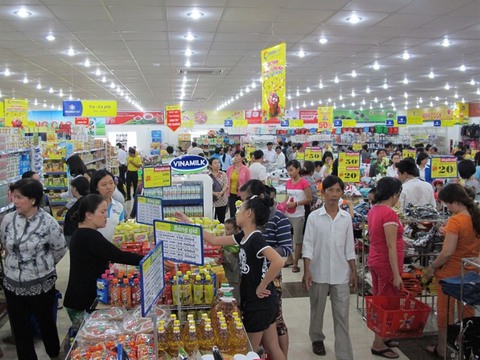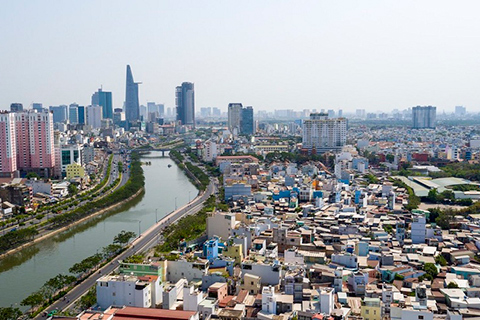A forgotten tool which should be reinstated
A forgotten tool which should be reinstated
The use of taxes and fees should be prioritized to improve the competitiveness of enterprises. As this tool has been long forgotten, it should be reinstated as quick as possible. Vietnam’s budget collection has increased over the years while budget deficit has been to a certain extent put under control.
Vietnam is among the nine countries in the “monitoring list” compiled by the U.S. Treasury Department. This piece of news was officially posted on the website of the State Bank of Vietnam late last month. The “Report on Macroeconomic and Foreign Exchange Policies of Major Trading Partners of the United States” recently released by the department sets three criteria for entries to the list, including (i) a bilateral trade surplus of at least US$20 billion with the United States; (ii) a current account surplus of at least 2% of GDP; and (iii) persistent engagement in “one-sided” currency intervention shown by net-buying of foreign currencies for at least six months with total net-buying value equivalent to at least 2% of GDP during 12 months.
Vietnam has been put on the monitoring list as she was deemed to satisfy the first two criteria. In fact, long before this list was published, related Vietnamese authorities had been quite aware of its direct impacts and long-term implications as the American side complained bitterly about her trade deficit with Vietnam. It should be noted as well that relevant Vietnamese agencies have so far made great efforts to partly solve the problem by urging domestic business groups to sign big contracts for buying U.S. jetliners and machinery.
The trade surplus with the United States, however, continues to be a sensitive issue when the Vietnamese economy still depends heavily upon foreign trade. According to the General Statistics Office (GSO), Vietnam’s total value of import and export reached US$480 billion last year, twice as much as her GDP. Last year’s export revenue alone topped US$243 billion, higher than Vietnam’s GDP. During the first five months of this year, the export sales surpassed the US$100 billion level. As Vietnam’s export turnover is higher than her GDP, a change to export would create dramatic impacts.
A closer look at Vietnam’s export profile may show that despite a high export revenue, the majority of Vietnamese exports—such as electronics, computers, cellphones, footwear and textile and garments—have a high content of import mainly because they are principally assembled or finished in Vietnam. The actual export value earned by Vietnam after subtracting the import value is thus relatively low. This is one of the reasons why the country’s GDP value remains low. The low start of GDP also means Vietnam’s annual GDP growth rate hovering about 7% is actually slow when it comes to the absolute value.
It is the high content of export in her foreign trade profile that has prompted Vietnam to shun from depreciating her domestic currency, a measure believed to shore up export. However, the exchange rate impacts not only the trade surplus with the United States but also import from China, another key trading partners of Vietnam. Different from Vietnam’s exports stateside, those that go to China—via both official and unofficial channels—are mainly agricultural, forestry and fisheries products, either unprocessed or semi-processed. These are in fact Vietnam’s real exports.
That China has depreciated her yuan and the yuan-green back exchange rate reaching the ratio of seven yuan to one U.S. dollar is just a matter of time is hitting Vietnamese exporters hard although they settle their deals in the U.S. dollar. The competitiveness of Vietnamese products in the Chinese soil has been seriously dented as the yuan is being forced to lose its value. Prior to the U.S. broadside against China’s Huawei, made-in-Vietnam Samsung cellphones do have a greater chance of selling well, which may aggravate Vietnam’s trade surplus with the United States.
The yuan-U.S. dollar exchange rate is likely to adversely impact Vietnam’s export. According to the GSO, Vietnam’s export growth during the first five months of this year was shy of 6.7%, way below the year-on-year rates of 17.5% and 19% in 2018 and 2017, respectively.
As the Sino-U.S. trade war intensifies, there has been a shift of foreign direct investment from China to Vietnam. Plus the foreign investment inflow into the local real estate sector, Vietnam’s foreign exchange supply has expanded, which in turn piles up even greater pressure on the Vietnam dong. The excessive strengthening of the domestic currency is apparently at odds with the competitiveness of domestic products, now not only in export activities but also on the home turf.
In its notice which has been sent out, the State Bank of Vietnam stressed on concerted coordination among relevant agencies and ministries in economic regulation. Seemingly, it is not wise to put all the pressure from the competitiveness of domestic enterprises and exporters on the foreign exchange rate. Contrarily, such heavy pressure on this rate should be relieved. The use of taxes and fees should be prioritized to improve the competitiveness of enterprises. As this tool has been long forgotten, it should be restored as quick as possible. Vietnam’s budget collection has increased over the years while budget deficit has been to a certain extent put under control.






















